The theology of creation and salvation in Orthodox Christianity upholds the centrality and kingship of mankind while simultaneously embracing a cosmological vision that is largely absent in western Christendom. A common characteristic of all creation is corruption and death, and yet we are told that God is not the author of death (Wisdom of Solomon 1:13-14), and that all of creation awaits its redemption through the revealing of the saints (Romans 8:19-22), when all of heaven and earth will be united to God (Ephesians 1:9-10). Within this framework, St. Maximus the Confessor (c. 580-662) is recognized as a theological and spiritual giant by the Orthodox Church. In his two troparia he is hailed as an “enlightener of the universe” and a “herald of the faith.”
Although best remembered for his stance against the Monothelite heresy, St. Maximus also masterfully harmonized the works of his philosophical and theological predecessors, correcting where need be, into a complex web in which cosmology, anthropology, Christology, soteriology, and eschatology are presented in one harmonious vision in which creation reflects the glory of God, and man is charged with the task of raising all of creation to union with the Godhead. Enabled by the Incarnation of the Divine Logos, the reciprocity of love between God and man is set forth as the path to this union in the spiritual universe of St. Maximus. As Lars Thunberg states, “His system of theology was in fact a spiritual vision of the cosmos, of human life within that cosmos, and therefore of the economy of salvation, the salvific interplay between the human and the divine.[1]” For St. Maximus, salvation is much broader than a rescue from sin and death, a Divine undoing of man’s mistake, but points to God’s eternal plan for mankind, regardless of the Fall. The Son of God was to be incarnate whether man had sinned or not, precisely to call man, and through his priestly lordship over the cosmos, all of creation into a deific union in the life of the Trinity.
Much of St. Maximus’ cosmology was developed in opposition to the cosmology of the third century theologian Origen, which remained popular in certain monastic circles, especially through the influence of the fourth century monastic and avid student of Origen, Evagrius Ponticus. In the Origenist system the material world exists as a result of the fall of pre-existent souls or intellects which grew satiated in their contemplation of God, and thus fell into the created order. Conversely, for St. Maximus, the material creation itself is an intended good creation of God, and the body and soul of man came into existence simultaneously as a cohesive unit. In a series of digressions in his Ambiguum 42, he explains that man is a complete species, with a necessary relation of body and soul which continues even after death (1321D-1324B); that the soul does not preexist the body (1325D-1336B); and that the body does not preexist the soul (1336C-1345C). In this point he is preceded by St. Gregory of Nyssa, and followed by St. John of Damascus,[2] and is in harmony with the general Patristic dictum that the creative act of each day was manifested instantaneously. The Confessor explains that the nature of the body and the nature of the soul form, according to the will of God, the composite nature of man, manifested in one human hypostasis.[3]
As Vladimir Lossky demonstrates, there is no singular Patristic definition of what precisely in man is defined as the image of God.[4] Considering the cohesion of the double-nature of man, for St. Irenaeus, St. Gregory of Nyssa, and St. Gregory Palamas both body and soul make up the image of God in man. For others it is found in the lordship of man over creation; his spiritual nature; his mind (νοῦς); his immortality; or his ability to know God and share in His divine life, etc. For St. Maximus, the image of God in man is connected to the mind and reason (λόγος). Quoting St. Gregory the Theologian, he writes: “’Then we shall know as we are known’ (1 Cor. 13:12), when we mingle our god-formed mind and divine reason to what is properly its own and the image returns to the archetype for which it now longs.”[5] However, as Thunberg demonstrates, it is the νοῦς which is most closely related to the image of God for St. Maximus, and thus fallen man has, through turning from the “leadership of reason,” replaced the image of God with that of irrational animals, while the renewed man in Christ is characterized by a γνῶσις attained through the νοῦς. The image of God in man is known through charity which subordinates man’s freedom to the creative will of God (λόγος), which is the reasonable principle whereby man’s life ought to be oriented.[6]
Closely linked to the image of God is this freedom of man, which is seen as a sign of the image in man, a shadow of the Divine Archetype, to be used to draw ever nearer to God. St. Maximus states: “If man is the image of the divine nature and if the divine nature is free, so is the image.”[7] Finally, although not included in the image of God in man for St. Maximus, the body is closely related to its destined realization. As man is a composite of body and soul, the body too is called to submission to the Divine Logos, and through dominion over the irrational part of himself, divinity is mediated also to the body which thus participates in the attainment to the likeness of God.[8]
With the unity of man in both composition and purpose firmly established, we can begin to look at man’s central position in St. Maximus’ cosmology, in which the fate of the entire cosmos is tied to that of man. As Torstein Theodor Tollefsen writes in his The Christocentric Cosmology of St. Maximus the Confessor: “[man] is created just for this purpose: to actualize the created potential of his being to achieve a fully realized community between all creatures and their Creator.”[9] In his vision of this task, man is described by St. Maximus as a microcosm (ό μικρὸς κόσμος) because man is composed of both body and soul—both physical and spiritual, sensible and intelligible natures, he is thus the creation in miniature, as creation also consists of both physical and spiritual realities. In this he is following upon the Cappadocian Fathers, and Nemesius of Edessa. Man occupies a “middle” position in creation, straddling the division between the material world that we inhabit and the spiritual world of the angelic powers.
Conversely, if man is a microcosm, then for St. Maximus the universe is a makranthropos—a man distended, and so the universe can be contemplated as a man. St. Maximus states in his work The Church’s Mystagogy that “the whole world, made up of visible and invisible things, is man and conversely that man made up of body and soul is a world ... intelligible things display the meaning of the soul, as the soul does that of intelligible things, and that sensible things display the place of the body as the body does that of sensible things.”[10] As body and soul constitutes but one man, so the visible and invisible aspects of the universe constitute but one cosmos. As Lars Thunberg explains, this relationship between man and the universe does not remain static, but takes on a dynamic element—“the duality should be transformed into a unity, unthreatened by dissolution. This task of unification is attributed to man as microcosm and mediator.”[11] For St. Maximus, the fact that man is a microcosm suggests and naturally leads to this vocation as mediator, in which man “[recapitulates] in himself the elements of the entire world, in his body and in his soul.”[12] Ambiguum 41, as well as chapters 5 and 7 of The Church’s Mystagogy is relevant for the outlining of this active role of mediating. This role of mediation and unification, of uniting diversity, with all diversity preserved, is a consequence of man’s bearing the image of God, and of man’s personal relationship with God.
St. Maximus writes of five dualities or divisions in which man participates by his being, and is called to overcome in the deification process: created and uncreated, intelligible and sensible, heaven and earth, paradise and universe, male and female.[13] Fr. John Meyendorff succinctly explains how man was intended to mediate between these divisions:
Originally, man was called to overcome the sexual opposition by “impassibility,” and to unite through holiness the universe and paradise, thus making one single and new earth. He was then to unite earth and heaven by virtue, in order to make one single, tangible creation, to unify the tangible and intelligible worlds by acquiring angelic gnosis, so that creation might no longer be divided between those who know and those who do not know God. Finally, man was to reunite by love the created and the uncreated, so that in His love for creation, God might become all in all.[14]
“Impassibility” here refers to the Patristic teaching that virginity reigned in the pre-lapsarian world, and to St. Maximus’ teaching that even the distinction between sexes only exists because God foreknew the fall of man, and that man would thus need a means of procreation. So to abide in virginity would overcome the gender distinction. For St. Maximus, this mediating work explains why man was created last, for it is man and man alone as a natural link who is called to unify the polarities in creation and offer them to God. As Dragos Bahrim notes, man is not a mediator simply in his ontological makeup as body and soul, but man is called to mediate specifically in his soul by vocation. To incline towards God and mediate between the divisions of creation is the guiding principle of man, his λόγος φύσεωσ. This idea of the logoi is central to Maximian theology. He states: “the logoi, firmly fixed, preexist in God, in accordance with which all things are and have become and abide, ever drawing near through natural motion to their purposed logoi.”[15] Thus the logoi are like a blueprint, identified with the thoughts and wills of God for each distinct creature.
However, as we have seen, being in the image of God, man possesses freedom, and thus he may live in accordance with, or contrary to his logos physeos. For St. Maximus, drawing upon many theologians before him, this points to man’s τρόπος ὐπάρξεως—his mode of existence. He writes, “all innovation is manifested in relation to the mode (τρόπος) of the thing innovated, not its natural principle (λόγος). The principle, if it undergoes innovation, corrupts the nature, as the nature in that case does not maintain inviolate the principle according to which it exists.”[16] Thus, man’s logos of existing as body and soul, and his vocation of turning towards God remain constant, but his tropos is variable according to his willful decisions.
This leads to St. Maximus’ famous triad, Being-Well-being-Ever-being.[17] Being and Ever-Being pertain to the image of God in man, while Well-being, or conversely Ill-being, pertain to the likeness of God to which man is called. Simply by existing man obviously possesses Being, and as the soul is immortal and all bodies will be resurrected by virtue of Christ’s resurrection, he too possesses Ever-being. However, according to the choices man makes through his free will, he attains either Well-being, that is—a life in Christ, or Ill-being—a life apart from God. He who achieves Well-being through a holy mode of existence accomplishes man’s call to the likeness of God, and thus will enjoy Ever-well-being, while he who neglects the commandments of the Lord through his mode of existence will suffer Ever-ill-being. Adam and Eve transgressed against the image of God within them and their logos physeos, and chose a tropos hyparxeos of disobedience, whereby Paradise was closed to man until the Incarnate Logos again opened the doors to us. Thus, St. Maximus writes that man is given Being at birth, Well-being at Baptism, and Ever-being at the bodily resurrection.[18]
As man turned from the Lord, and ate of the Tree of the Knowledge of Good and Evil, he was unable to fulfill his vocation as mediator of all creation. Meant to rule over creation in a relationship of love, Adam instead gave himself over to his senses and became dominated by creation and his passions, thus preventing the intended relationships between God and man, and man and creation. Thus the only true man to ever live, the Incarnate Logos Christ our Lord mediated the divisions of creation, which man is again free to effect in his own life. Fr. John Meyendorff again explains:
By his virginal birth, Christ overcomes the opposition of the sexes—In Christ, says Paul, there is neither male nor female (Gal. 3:28). By his death and resurrection, Christ destroys the separation that existed since the fall between paradise and the universe. Today you shall be with me in Paradise, says Christ to the good thief (Lk 23:43)—giving to the human race access to the forbidden garden, coming back himself on earth after his resurrection, and showing that in himself paradise and the universe are henceforth one. By his ascension he unites heaven and earth through the exaltation of the human body, co-natural and consubstantial with ours, which he had assumed. By going beyond the angelic orders with his human soul and body, he restores the unity between the worlds of sense and of mind, and establishes the harmony of the whole creation. Finally, as man, he accomplishes in all truth the true human destiny that he himself had predetermined as God, and from which man had turned: he unites man to God.[19]
The fate of all creation is tied to that of mankind, its high priest and mediator, and thus in this turning from God, the entire cosmos was turned from God. St. Maximus writes, “in the beginning sin seduced Adam and persuaded him to transgress God's commandment ... thus condemning our whole human nature to death and, via humanity, pressing the nature of (all) created beings toward mortal extinction.”[20] Through Adam’s sin the original beauty of creation was tarnished, but through our Lord Jesus Christ all is and will be restored.
In his essay “Created in Incorruption,”[21] Fr. Damascene of St. Herman’s Monastery in Platina, CA gives a detailed synopsis of the Patristic doctrine of pre-lapsarian creation, and the effects of the fall on mankind and the cosmos, and he draws heavily from St. Maximus. As Fr. Damascene relays, regarding man’s physical condition before the Fall, St. Maximus teaches that Adam and Eve were wholly without sexual relations and passions;[22] partook of imperishable fruits but produced no bodily waste;[23] were impervious to cold and heat and all the elements;[24] were free of all bodily infirmities and injuries;[25] and thus they were immortal, of another temperament “held together by qualities that are simple and without strife. For reason of this temperament was the first man naked, not as one fleshless or bodiless, but as one not having the temperament which makes the flesh denser, mortal, and tough.”[26] In speaking of bodily temperaments, St. Maximus is again combating Origenism which taught that man was fleshless and bodiless before the Fall.[27] For the Fathers, man’s body was indeed somehow less physical, and more spiritualized, but it was still indeed a body of flesh, just as the risen Christ possessed a body, and yet could hide His identity and pass through doors.
Fr. Damascene further relates the teachings of St. Maximus on the condition of man’s mind before the Fall. According to St. Maximus, man suffered neither from forgetfulness nor ignorance, and his mind was not “impressed by the imagination”[28] which, as we know in our condition, acts as a barrier between man and God and prevents man from seeing clearly into the cosmos—from contemplating the logoi of the creation around him. It is through contemplating these traces of God’s glory in all of creation that we are able to raise our nous to God, and thus the wall of the imagination is a barrier to contemplation of God.
In Ambiguum 45 he further states that man was free of the “deceitful passions of the imagination,” and had no need for arts and skills or the study of nature which he rose above in his wisdom.[29] Furthermore, an important point for St. Maximus is that “When God created human nature, He did not create sensible pleasure and pain along with it; rather, He furnished it with a certain spiritual capacity for pleasure, a pleasure whereby human beings would be able to enjoy God ineffably.”[30] Clearly man was meant for a reality that is wholly other than our experience of corruption, pain, worldly pleasure, and death.
However, as we have said, Adam and Eve sinned and “Through sin, this cosmos became a place of death and corruption.”[31] In seeking his nourishment apart from God, man darkened the image of God within himself and handed all of creation over to death, which takes us as “his food.”[32] For St. Maximus, the garments of skin which Adam and Eve were clothed in by God indicate the susceptibility to pain and corruption that immediately befell them. Furthermore, the deceit of the devil, driven by his self-love which for St. Maximus is the root of all evil, fractured human nature in its tropos hyparxeos into a myriad of opinions and illusions. Through this man discovers all the vices and drives them into his nature as a law. Especially man discovers three principle vices: ignorance, tyranny, and self-love. In short, the Fall—the sin of Adam, the deceit of the devil, drives man from his natural contemplation of God to a life governed by the sensible pleasures of the world which eventually drives him into the grave.
As we have seen, the Fall was a perversion of man’s capacity for spiritual pleasure into a hedonistic search for sensible pleasures, which introduces pain into the life of man and the cosmos. This dialectic of pleasure and pain is important for St. Maximus. He writes, “When God created human nature, He did not create sensible pleasure and pain along with it ... but ... the first man, by use of his senses, squandered this spiritual capacity—the natural desire of the mind for God—on sensible things,”[33] and “Every forbidden pleasure has come to be through passions aroused through the senses ... For desire added to sensual feeling changes into pleasure, giving it a shape, and sensual feeling.”[34] Through this redirection of desire, man became akin to the animals and uses his intellectual capacities for the satisfaction of base sensual, self-loving desires and lusts. Conversely, God, in His great love for mankind, introduced the rule of pain into our lives as a “punitive and purgative counter-force into fallen man’s life.”[35] Of course, pain ultimately leads to death, and viewed in a soteriological context, it is seen as a gift from God that brings an end to our destructive, sinful, and pleasure-seeking lives. However, in our fallen state we often only seek harder to find pleasure and avoid pain.
As we have seen, St. Maximus taught that the virginal life reigned in the Garden before the sin of Adam and Eve. Thus, the introduction of sexual passions and especially the rule of sexual procreation is a foremost sign of the law of pleasure and pain. Sexual intercourse is a result of sensible pleasure, and gives rise to birth through pain. In a play on words, St. Maximus teaches that Adam’s coming into existence (γένεσισ) was perverted by the Fall into the law of conception and birth (γέννησισ)—an imprisonment from which we can escape only by the birth (γέννησισ) of Christ. As Fr. John Meyendorff stated, Christ overcame the opposition of the sexes through His virginal birth, and furthermore, He broke the law of pleasure by being born without pleasure, and He broke the law of pain by His painless birth, as well as His voluntary and sinless passion and death which transformed the law of death “from a judgment of death because of sin, into judgment upon sin.”[36] St. Maximus writes forcefully and extensively on this:
After the transgression pleasure naturally preconditioned the births of all human beings, and no one at all was by nature free from birth subject to the passion associated with this pleasure; rather everyone was requited with sufferings, and subsequent death, as the natural punishment. The way to freedom was hard for all who were tyrannized by unrighteous pleasure and naturally subject to just suffering and to the thoroughly just death accompanying them. In order for unrighteous pleasure, and the thoroughly just death which is its consequence, to be abolished (seeing as suffering humanity has been so pitiably torn asunder by them, with human beings deriving the beginning of their existence from the corruption associated with pleasure, and coming to the end of their life in the corruption of death), and in order for suffering human nature to be set right, it was necessary for an unjust and likewise uncaused suffering and death to be conceived—a death “unjust” in the sense that it by no means followed a life given to passions, and “uncaused” in the sense that it was in no way preceded by pleasure.[37]
This unjust and uncaused suffering and death is clearly that of our Lord Jesus Christ.
Christ overcame the law of pleasure and pain that ruled over mankind from the time of the Fall, He mediated the divisions that man was called to in his microcosmic vocation, and He offered Himself and all of creation back to the Father. However, He did not accomplish this merely in our place, but He rather made it possible for us to once again fulfill our vocation of ascending to God, and bringing the entire cosmos with us. And if self-love is the foremost vice, then true love, of God and others and all creation, is the highest virtue, and thereby we accomplish our God-given tasks. Love possesses and fulfills all the other virtues—faith, hope, humility, meekness, gentleness, mercy, self-control, patience, long-suffering, kindness, peace, joy, etc. Through love man inclines his will to that of God, and thus human nature is no longer at variance with its logos. By love, in Jesus Christ, the fracturing of human nature is overcome, and harmony between God and man is established. According to the Confessor, it is only through love that man is shown to be truly in the image of God, for God is Love.[38] Through the Incarnation, God initiated a reciprocity of love between God and man that leads to the destruction of egoism and the deification of man.
One final point is to be made: for St. Maximus, the greatest experience of love and the journey to deification happens precisely within in the Church, specifically within the worship of the Divine Liturgy. As we have seen, man was initially intended to unite heaven and earth by virtue, to unify the tangible and intelligible worlds by acquiring angelic gnosis, and to reunite by love the created and the uncreated.[39] He states that in the Liturgy, the Christian soul moves towards experiential theology of God, acquiring intelligence equal to that of the angels, able to contemplate the tri-unity of the divine Godhead, for “the Church is not an ecclesiastical institution distributing divine grace, but truly a Mystical Body that represents symbolically the whole divine-human mystery, the whole mystery of God’s good counsel, and the economy of salvation.”[40] In his Mystagogia, he describes the Church as a figure of God, as an image of the world, the Church as man and man as the Church, and the Church as an image of the human soul – a series of contemplations in which the various layers of man’s vocation and soteriology unfold, but as is true for the entire Church, for St. Maximus the celebration of the Eucharist is the very center of our entire lives, the movement in which all things are unified towards God. He states, “... as a consummation of everything the distribution of the mystery takes place. It transforms in itself and renders those who participate worthily, through grace and participation, similar to the Good which is this Cause ... In this way they may both be and be called gods through the gift of grace, since God as whole fills them entirely.”[41] God is Love, and He offered Himself wholly in His incarnated life, and so through His Body of the Church and Her worship, man finds his purpose and the fulfillment of his vocation.
Orthodox theology is cosmological. Man is at the very center of creation and theology, but He brings the entirety of creation with him. Charged with the task of unifying the multiplicity and divisions of creation and offering it back to God, man instead chose to seek a life of sensible pleasure apart from the nourishment and commandments of God. In doing so we lost Paradise and the blessed life free of corruption, and we plunged into an existence ruled by the laws of pleasure and pain ultimately culminating in death for the entire cosmos. However, in the ultimate act of love, God the Word became Incarnate and dwelt among us, fulfilling the roles that Adam had laid aside. Through the kenotic love of Christ we can once again take up our true life and ascend ever closer to the divine life of the Trinity, which the regenerated man accomplishes through love in the worship of the Church. St. Maximus the Confessor is a luminary of this theological vision in his writings and in his life. By the grace of God may this divine plan be fulfilled through us in the Holy Church.
* * *
Works Cited
—BAHRIM, Dragos. "The Anthropic Cosmology of St Maximus the Confessor." Journal for Interdisciplinary Research on Religion and Science 3 (2008): 11-37. <http://docs.google.com/>.
—Hieromonk Damascene. "Created in Incorruption: The Orthodox Patristic Understanding of Man and the Cosmos in Their Original, Fallen, and Redeemed States." The Orthodox Word 44.258-259 (2008): 9-99.
—Lossky, Vladimir. The Mystical Theology of the Eastern Church. Crestwood, NY: St. Vladimir's Seminary, 1976.
—Meyendorff, John. Christ in Eastern Christian Thought. Crestwood, N.Y: St. Vladimir's Seminary, 1987.
—Sherwood, Polycarp. The Earlier Ambigua of Saint Maximus the Confessor and His Refutation of Origenism. Romae: Orbis Catholicus, 1955.
—St. Gregory of Nyssa, On the Making of Man.
—St. John of Damascus, On the Orthodox Faith.
—St. Maximus the Confessor. Ad Thalassium. Patrologia Graecae, vol. 90.
—St. Maximus the Confessor. Ambigua. Patrologia Graecae, vol. 91.
—St. Maximus the Confessor, Mystagogy. Patrologia Graecae, vol. 91
—St. Maximus the Confessor. On the Cosmic Mystery of Jesus Christ: Selected Writings from St. Maximus the Confessor. Trans. Paul M. Blowers and Robert Louis Wilken. Crestwood, NY: St. Vladimir's Seminary, 2003.
—St. Maximus the Confessor. "The Church's Mystagogy." Maximus Confessor: Selected Writings. Trans.George C. Berthold. New York: Paulist, 1985.
—St. Nicodemus. A Handbook of Spiritual Counsel. Trans. Peter A. Chamberas. New York: Paulist, 1989
—Thunberg, Lars. Man and the Cosmos: the Vision of St. Maximus the Confessor. Crestwood, NY: St. Vladimir's Seminary, 1985
—Thunberg, Lars. Microcosm and Mediator: the Theological Anthropology of Maximus the Confessor. 2nd ed. Chicago: Open Court Pub., 1995.
—Tollefsen, Torstein. The Christocentric Cosmology of St. Maximus the Confessor. Oxford: Oxford UP, 2008. <http://www.scribd.com/doc/12692076/Torstein-Tollefsen-The-Christocentric-Cosmology-of-St-Maximus-the-Confessor>.

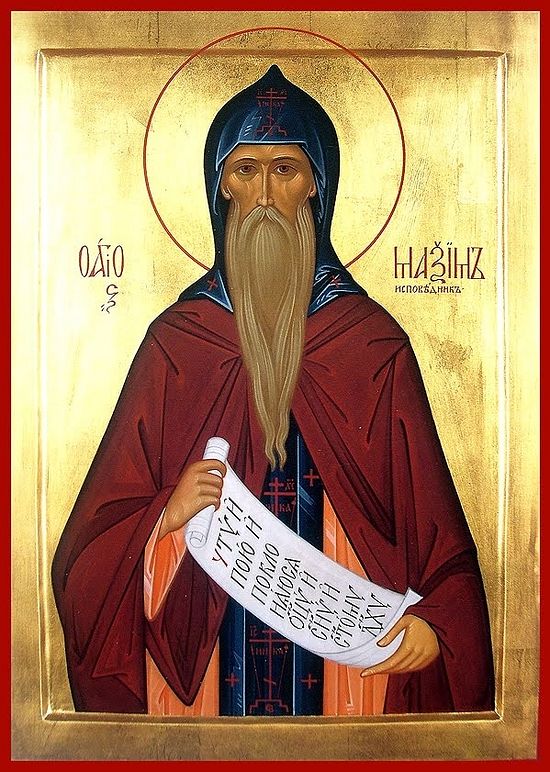
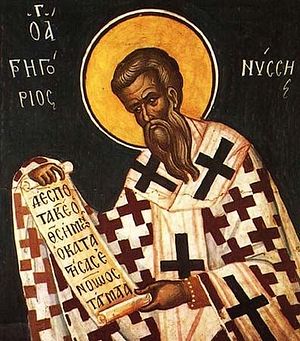
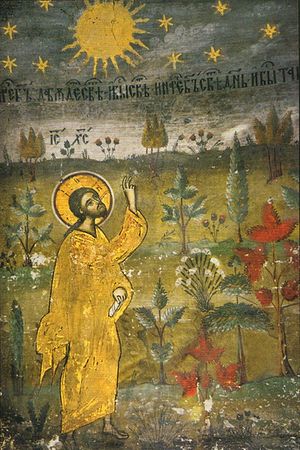
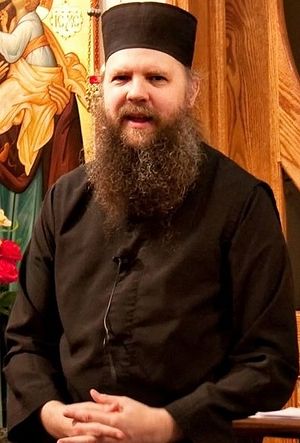
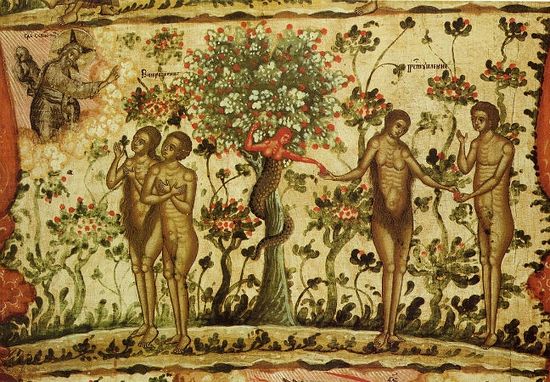
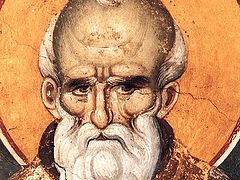
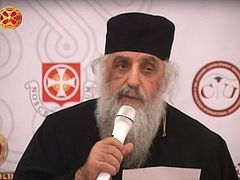
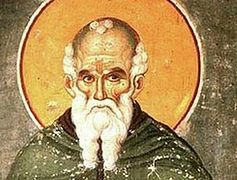
If you read this - I loved your article on Russian Insider about St. Tikhon's in northeastern Pennsylvania. I live about 45 minutes from this wonderful Russian/American treasure. I wanted you to know that I am born Roman Catholic but disagree with everything I have learned over the last 40 years.
Your article cade me cry and a thought came over me. I believe something is drawing me to want to join the perish and begin a new relationship with God Our Father.
May God Bless you and keep you safe, In Jesus Name I Pray,
Sincerely yours,
Tom Davis